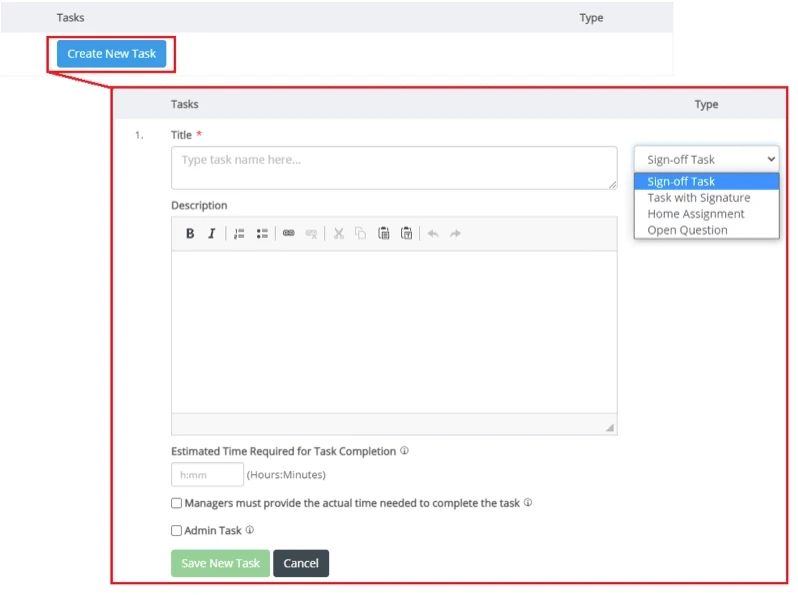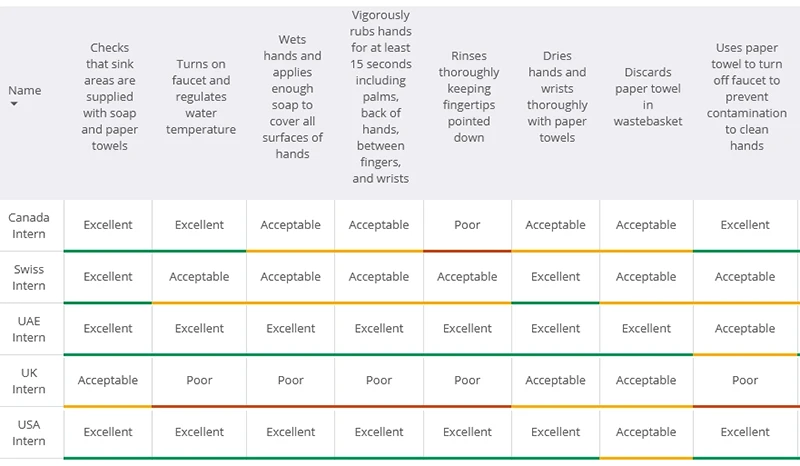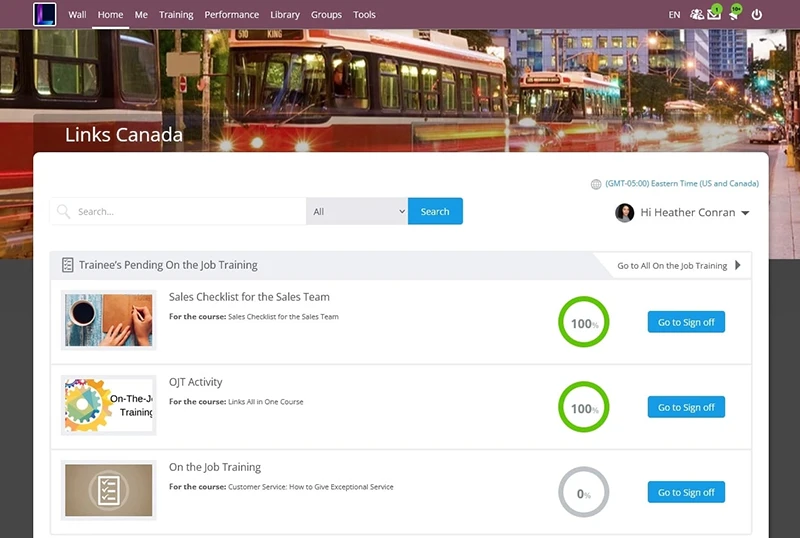April 27, 2022
6 Min. Read

Virtual instruction has many advantages, but it doesn’t work for everything. For training to be truly effective, managers often need to physically show employees how to perform certain tasks and then observe if the employee can properly perform them. Some companies refer to this kind of training as “observational checklists” or “live trainee evaluations.” Schoox calls this “on-the-job training”.
Why Provide Employees On-the-Job Training?
On-the-job training (OJT) is an essential part of learning and development for many businesses. Let’s look at some reasons why it’s so important.
Optimize Frontline Workforce Performance
A common adage in the business world is that your customer is always right. Optimizing frontline workforce performance can help your business improve customer service and ultimately improve your bottom line.
Whether it’s a restaurant, hotel, retailer, or other consumer-facing business, unfavorable customer feedback usually means your employees aren’t performing well on the frontlines. While isolated incidents of poor customer service might be part of the issue, a general pattern of bad reviews indicates a larger systemic failure on the part of the business—not its employees. These kinds of problems can often be traced to inadequate training.
OJT helps businesses ensure their frontline workforces master the skills critical to success—at both an individual and organizational level. It enables learning and development (L&D) professionals to connect specific skill sets to key business activities and goals, allowing them to design training programs that teach their employees the skills required to truly excel at their jobs. This might mean showing hotel housekeeping staff how to fold towels or prepare rooms in a particular way and observing each employee to confirm knowledge retention, or discreetly observing employees on the sales floor after training to gauge how they interact with customers.
Hands-On Experience
Failure is good for learning. OJT gives employees the opportunity to learn, correct mistakes and enhance skills in a pressure-free environment, providing them with much needed practice before they hit the frontlines or go out in the field. Even for non-customer facing jobs, OJT allows employees to hone their skills before they’re put to the test. Physically performing job tasks also helps employees feel more connected to their work.
Ensure Knowledge Retention
Training is only effective if managers can ensure their staff can perform the jobs that need to be done. OJT is one of the best ways for training managers to confirm their employees learned the tasks and skills covered in training. By observing their performance, training managers can determine whether employees are ready for the frontlines or need more help before taking on the job. They can then provide the necessary additional training to help employees strengthen any weak spots and feel confident in their ability to complete critical tasks. With mobile accessibility, training managers can even quietly monitor employee performance where it matters most—in front of customers.
The Schoox Difference
Businesses often rely on paper scorecards and manual methods to track OJT training compliance, but this method is cumbersome to maintain, makes it difficult to share data with other systems and to report on at scale. Other training tools often focus on simple forms and observation checklists that may not provide enough flexibility to design training in a way that’s efficient and ideal for a digital workplace. Schoox goes above and beyond observation checklists to encourage effective learning via on-the-job training. Schoox offers training managers and L&D professionals the option to create course-connected OJT tasks, which are part of a larger course or curriculum, or standalone OJT tasks that are independent from any other ongoing training programs.

As an example, a course or curriculum-connected OJT task could be used to observe employees prepare different foods after they watch digital content teaching them about each menu item.
A standalone OJT task might be used to observe an employee prepare a new menu item that wasn’t covered in the original course. They can be used to provide supplemental or ad-hoc training whenever required.
Once learners have completed their assigned OJT tasks, training managers can access an at-a-glance view of progress across the board. Training managers can use this information to determine who on their team is excelling, who needs more support, and what kind of additional supervision might be needed for particular team members.

What’s New?
We recently made several enhancements to OJT functionality within Schoox. Admins and training managers may now elect to re-use previously created standalone OJT tasks as part of a course or curriculum. In the example above, this means the training managers would be able to pull the standalone OJT task created for a new menu item into the existing course or curriculum.
We also added a new homepage widget that allows trainees to quickly sign off on OJT tasks, providing a better user experience. Finally, we added a new report for both standalone and course-connected OJT tasks that displays learner progress for each. This provides L&D professionals with critical insight into how employees are performing, which can be applied to improve the design of future OJT tasks.

On-the-job training is the best way for many employers to teach and assess mission-critical skills. It helps employees build the confidence they need to be successful in their roles. When done right, it translates into greater operational efficiency, exceptional customer service, repeat customers, and increased revenues for businesses.
Chat with one of our Solution Consultants to learn more about the many flexible options to create OJT initiatives in Schoox.


